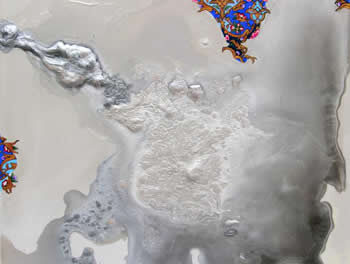Is there a more popular, more oft-performed opera than Menotti’s Amahl and the Night Visitors? It turns up every winter, in productions grand and small, in churches, high school auditoria, and on large stages. It’s an ideal “first opera” for young people, its casting and staging demands are modest, and it is so charming and endearing that it almost always works its magic, even when shortcomings of various kinds intrude. It has everything larger operas have, too — arias, ensembles, choruses, dancing, drama…. And for many opera companies, it is the perennial cash cow, as Messiah is for choruses and Nutcracker is for dance. (In the opera world, only Hansel and Gretel — with its gingerbread house, chorus of angels, and a wicked witch who ends up getting baked — comes close, but it’s longer and at once more demanding and less forgiving….)
Long Leaf Opera has discovered the many aforementioned virtues of Amahl, so this year, the company’s sixth, it mounted its fourth run of the short opera-in-English. The company is furthering its goals of taking affordable, accessible opera to its public by trying new venues, and this time it selected the recently completed Fellowship Hall of Durham’s St. Philip’s Episcopal Church for the season’s four public performances, dedicating a portion of the proceeds to Urban Ministries of Durham, whose headquarters are located nearby.
Like last year, the cast included returning veterans — Denise Murchison Peyton (the Mother), Carl Johnson (Kaspar), Robert Williams (Melchior), Henry S. Gibbons (Balthazar), and Shiangtai Tuan (the Page). Amahl was sung by Joseph Bishop, who understudied the role last season. The sets, by Doris Schneider, the brilliant costumes, by LLO Artistic Director Randolph Umberger, and the lighting, by Brett Hargis, were effective in the new space, although there was less contrast in illumination than last year, in NCCU’s auditorium. There was a chorus of ten shepherds and three somewhat athletic dancers, choreographed by Boleyn Willis. LLO Music Director Benjamin Keaton conducted the chamber orchestra — a string quartet and seven other instrumentalists. The band was placed off to the side of the “stage,” significantly enhancing audibility of the singers. The diction and projection were good throughout, so the story was clearly revealed; Keaton tended the orchestra well, resulting in few occasions when the singers were overpowered. Thanks to the placement of the dwelling’s door, the “inside” and “outside” scenes — particularly at the outset, when Amahl plays his flute, and then when the Night Visitors arrive — were not too well managed, but this is a relatively minor quibble. For the most part, the singing at the performance of December 2 was fine and the playing effectively enhanced the proceedings. In addition, the drama this presentation conveyed was often gripping — so much so that a companion dog (in training) commented several times on the procession of the Night Visitors and growled from time to time thereafter!
As noted, Amahl has many redeeming qualities, so most productions are successful. This one had the advantage of strong experience in nearly every role and comparable good guidance from a master music-theatre conductor. The crowd was often moved and seemed pleased throughout. One performance, officially sold out, remains; it might be worth a call to see if any tickets are available. See our calendar for details.











